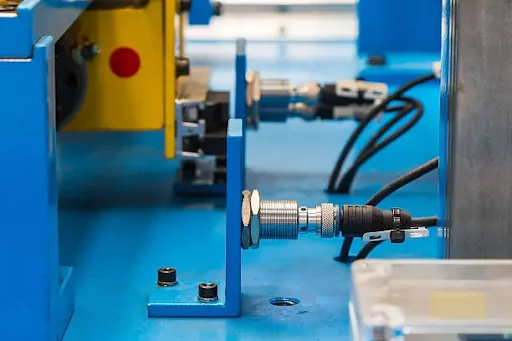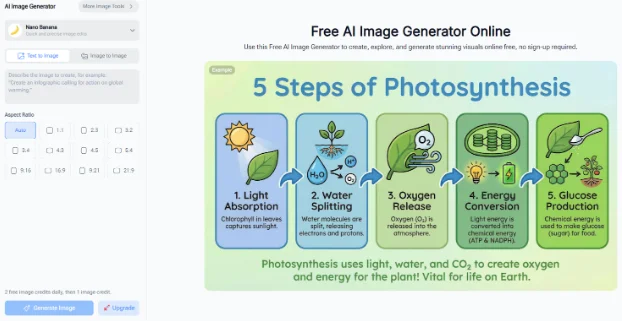
With the advancement of industrial automation, the need for accurate, reliable, and non-contact sensing technology has reached new heights. One of the most flexible types of technology is the capacitive sensor. Able to detect both metallic and non-metallic entities, these sensors are crucial in the packaging, pharmaceuticals, agriculture, and manufacturing sectors.
This article caters to B2B businesses such as automation specialists, industrial designers, OEMs, and system integrators who want to learn how these types of sensors work, their advantages, applications, and efficient induction into the industrial systems.
Explore high-performance proximity and capacitive sensors on Omchele’s https://www.omchele.com/fr/proximity-sensors/ .
What is a capacitive sensor?
A capacitive sensor detects the presence or proximity of an object without making contact by using changes in capacitance. Its construction consists of two conductive plates which form a capacitor. When a target object moves toward the sensing surface, it changes the electric field between these plates and thus capacitance. This change can be converted into a switching signal.
What makes capacitive sensors special is their ability to detect not only conductive (metal) objects like inductive sensors do, but also non-conductive items such as glass, plastic, wood, liquids, powders, and even more. This wide detection range does wonders for operations dealing with low-conductivity materials, transparency, and thickness.
Capacitive sensors can be flush or non-flush mounted and come in cylindrical or rectangular shapes. This makes capacitive sensors adaptable to many industrial environments.
Advantages of Capacitive Sensors in B2B Applications
There are notable benefits that capacitive sensors provide to businesses in the B2B sectors, especially those looking to streamline processes and boost productivity.
- Versatile Material Detection
Unlike inductive sensors which are limited to metal targets, virtually any material having a dielectric constant greater than air can be detected by capacitive sensors. This includes things like paper, liquids, wood, and even ceramics, making capacitive sensors useful across several industries.
- Contactless Operation
Capacitive sensors operate without physical contact, which reduces wear and extending the sensors’ useful life. Less negative exposure to sensitivity, alongside less maintenance destabilizes exhaust contamination risk in delicate environments.
- Adjustable Sensitivity
Numerous capacitive sensors enable the manual or electronic adjustment of sensitivity. This flexibility allows the same sensor to be calibrated to different materials or thicknesses, which is beneficial in reconfiguring production lines.
- Compact and Durable Design
Capacitive sensors are designed to withstand harsh conditions. They come in rugged housings and are sealed against dust and moisture, offering an IP67 or higher rating, making them ideal for intensive industrial environments.
- High Repeatability and Rapid Response Time
In fast-paced settings such as bottling or packaging, speed and reliability are crucial. Within milliseconds, capacitive sensors offer reliable switching, which makes them perfect for use in automated systems.
For these specific reasons, cleanliness, precision, diversity of materials, and stringent requirements makes integration of capacitive sensors indispensable.
Major Industrial Uses of Capacitive Sensors
With their ease of adaptation, capacitive sensors have spread across different sectors. Here are some examples from the B2B space:
Material Level Detection
Capacitive sensors are especially popular for level detection in silos, tanks, and hoppers. These sensors can remotely detect the level of liquids, powders, or granules through the walls of the containers without requiring physical contact.
Packaging and Bottling
Sensors can check for the correct placement of labels, identify clear bottles, measure liquid amounts in bottles, and verify caps and seals, all without stopping the production line.
Wood and Furniture Manufacturing
Capacitive sensors assist in identifying and verifying the alignment of wood panels as well as tracking their movement on conveyor belts during machining processes.
Agriculture and Food Processing
In agriculture and food processing, these sensors are used to detect packaging materials as well as packaging, monitor moisture in produce, and ensure compliance with hygiene regulations.
Semiconductor and Electronics
Capacitive sensors can identify wafers and other components without contaminating them in cleanroom settings. Their accuracy makes them ideal for delicate processes.
Omchele Capacitive sensors are suitable for all the above applications, including models designed for repeatability and strong performance in environmental interference. View Omchele’s collection of proximity sensors to find the right capacitive solution for your system.
Key Considerations for B2B Buyers
For an industrial application, the choice of capacitive sensor needs careful consideration of the system specification and the operating conditions. The following critical points will help B2B Buyers evaluate:
Material Type and Dielectric Constant
Capacitance will be affected differently depending on the materials being used. For your chosen material, utilizing the dielectric constant aids in sensor selection and accurate adjustment.
Sensing Distance
Evaluate if the sensor requires detection through a container wall or in free air. While capacitive sensors have a limited range compared to ultrasonic or optical devices, they excel in precision over short distances.
Environmental Conditions
For operations with dust, vibrations, chemicals, or humid conditions, ensure the sensor has suitable IP ratings and is made from PBT, stainless steel, or PTFE.
Mounting Configuration
Select between flush and non-flush mounting based on space and desired detection range. Flush-mounted sensors provide better protection against environmental factors; non-flush types provide longer detection range.
Output Type and Compatibility
Sensors are available with NPN or PNP outputs and some even feature analog outputs. Check for compatibility with your PLC or control system. More advanced models offer IO-Link capabilities for remote diagnostics and supervision.
Adjustment and Calibration
The sensitivity control features of some sensors can be adjusted via potentiometer which sometimes can be altered using digital buttons. Select based on ease and flexibility of readjustment.
Best Practices for Integration and Maintenance
To maintain the proper functioning and increase the life span of capacitive sensors, B2B teams should consider the following Integration and Maintenance best practices:
- Proper Alignment: Failing to properly align can result in detection failure or inaccuracies. Make sure to securely mount sensors with the correct alignment to the intended target direction.
- Avoid External Interference: Strong electromagnetic fields or large metal objects that are not intended as targets may affect detection. For this reason, sensors should be positioned externally.
- Use Clean Surfaces: When the sensing surface is plastic or glass, ensure surfaces do not have any remnants that may interfere with the capacitive level.
- Periodic Calibration: In applications where material properties (density, viscosity, etc.) or temperature change over time, periodic recalibration provides optimal operation.
- Cable Management: In high speed environments, ensure that cables are monitored and secured in place to prevent damage, electrical interference, and vibration damage.
Through regular inspection intervals and guidelines, proper troubleshooting training, and best practice managing sensors, companies can bolster system uptime while shortening troubleshooting delays.
In summary, capacitive sensors offer great value as an automation sensor owing to their flexible nature, and adaptability to modern industrial automation. Their non-contact detection capabilities position them as great enablers of automation, monitoring, and quality control across industries.
For businesses trying to enhance or create new sensor systems, knowing the operating principles of capacitive sensors, and how to select and integrate them, is crucial for operational dependability and system effectiveness.
Omchele still assists their global industrial customers with high-performance capacitive sensors along with proximity technologies specifically designed to address the challenges of actual production environments.

The Connection Between Accounting Firms And Regulatory Compliance

Why Smart Startups Choose Custom AI Business Solutions Today

How to Optimize Business Operations with Vending Machines in Australia

The Digital Lifeline: How Technology is Revolutionizing Addiction Recovery

From Clicks to Clients: Why Trust-First Local SEO Wins the Long Game

Forgot Your iPhone Password? Here’s How to Unlock It Easily

How Strikes and Step Through Bikes Are Using Tech for Better Range

NoteGPT AI Image Generator: Transforming Branding and Marketing








